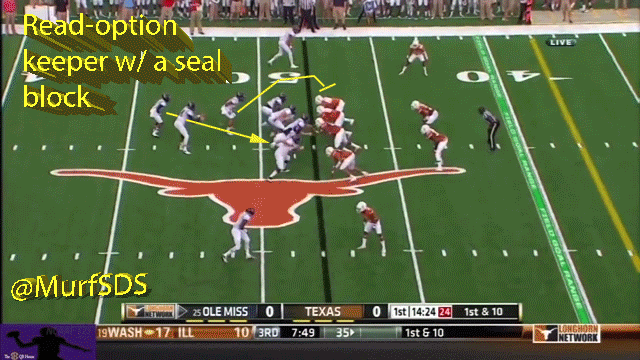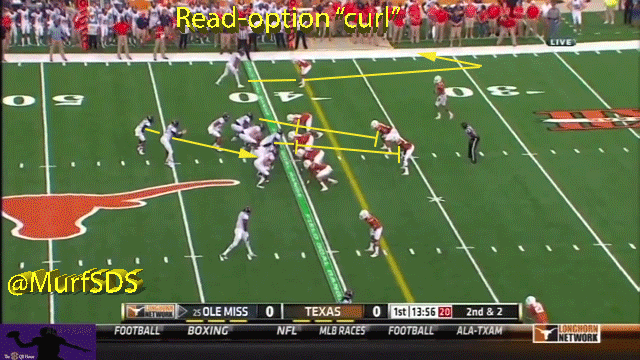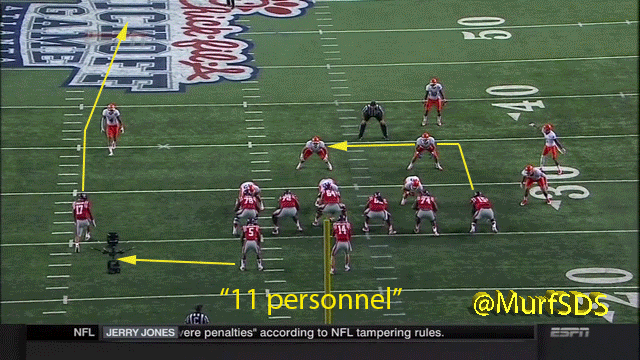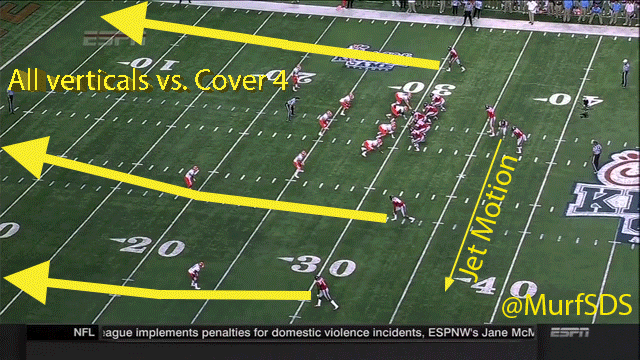Ole Miss QB Bo Wallace has the tools to take the Rebels all the way
Some players virtually never seem to get their just due.
For talented University of Mississippi quarterback Bo Wallace, critics and pundits alike have gone to town on him for everything from his perceived lack of arm strength, to his propensity for turnovers at inopportune times (as if there is ever a good time).
But as it tends to happen with our society, people rarely point out the positives, instead opting to paint the situation with broad strokes. Think about it; Wallace has the most experience, and he’s one of the most accomplished QBs in the entire SEC — along with Nick Marshall of Auburn — though he’s rarely mentioned as such.
Objectively speaking, it can be argued that he’s the premier signal-caller in the entire conference, but pundits will mention inexperienced guys like Maty Mauk (Missouri), Dak Prescott (Mississippi State) and Hutson Mason (Georgia) — and with good reason as the league has some talented players — before they get to Wallace.
I mean, what gives? Is Wallace the most polished signal-caller we’ve ever seen?
Simply put: no.
His footwork tends to get out of kilter; he throws off-balance even with a clean pocket; his arm slot changes for no apparent reason.
But there are plenty of times when he’s absolutely on the money with his mechanics and the results mirror that. Additionally, he’s playing in an offense that’s multiplistic in philosophy and can hang a QB out to dry at various times.
But with Ole Miss’ rapid ascension to the elite of the Southeastern Conference, many wonder if it will be Wallace that holds the Rebels back from a spot in the College Football Playoff.
The naysayers should find a soft landing spot, because they will be let down unmercifully watching Wallace prove his worth this season.
Perfect Fit For A Multiplistic Offense
Though some seem to gloss over it, Wallace is actually a really good athlete. The Ole Miss offense has a ton of moving parts: zone-read option, shotgun, pistol, quick-hitters, stretch and vertical concepts.
At 6’4″, 215 pounds, running a reported 4.7 40-yard dash, Wallace’s skill set meshes well with what Freeze requires from a signal-caller. The duo worked together first at Arkansas State where Freeze was Wallace’s offensive coordinator, for a year, before the latter transferred to East Mississippi Community College.
It’s no wonder that when Freeze finally received his big break to be a head coach, he tabbed Wallace to captain the ship. His accuracy, poise under pressure (no snickering, it’s true) and fearlessness is exactly what the doctor ordered in Oxford.
“He’s a pocket passer but moves a lot better than what one would think,” Central Arkansas head coach Steve Campbell told Clarion-Ledger (h/t to the Sportingnews.com).
“And (he) is bigger and stronger. That’s what separated him from a lot of people that just drop back there and throw it. He can throw the football but he also has some mobility. I think he’s a heck of a football player.”
When play-action, and the threat of the QB run, is a staple in your offensive scheme you better be a proficient athlete.
Thus far in his career, Wallace has generated 758 yards on the ground — which would a ton higher if not for sack yardage being included — with 14 of them going for touchdowns.
Here we see Wallace on a read-option keeper. Although the up-front blocking was geared for the running back dive, Freeze provided Wallace a seal block to attack the perimeter. From there his athleticism takes over; he even breaks an open-field tackle in the process.
Here was the very next play in that game. Working from a similar set,”20 personnel,” this time Wallace forces the linebacker to press the line of scrimmage due to the obvious threat of a run.
Instead of trying to beat the backer to the edges, or even run him over, Freeze provides an outlet in the form of a pop pass. Wallace does a great job at resetting his feet and driving off his back leg to get the necessary velocity on the pass — something for which he’s often criticized for.
While Wallace may not have extraordinary arm strength, like former Ole Miss QB Eli Manning, he can generate more than enough velocity to make all the necessary throws in virtually any style of offense.
Most don’t take into account that he had surgery on his throwing shoulder prior to last season; the injury was pretty severe according to the doctor that performed his surgery.
“When we did Bo’s surgery, his injury was more severe than what his preoperative MRIs and radiographs had demonstrated,” Dr. William B. Geissler expressed (h/t to Bruce Coleman of UMC.edu).
“Bo tore the ligaments that go from his shoulder blade to his clavicle. The clavicle helps hold up your upper extremity; if ligaments are torn, your arm hangs down and the clavicle becomes quite prominent.
“During a complex throwing motion, the clavicle rotates, the shoulder blade rotates, and as you’re raising your arm, your muscles are contracting. To be an elite SEC quarterback, this is a very synchronized motion that’s been practiced over many years. When you tear the ligaments, all that motion is thrown off,” Geissler finished.
Wallace’s improved mechanics (he worked with QB guru Tom House in the offseason to tighten up his mechanics), coupled with his now healthy throwing arm, makes the Ole Miss offense downright frightening when you factor in he may be throwing to arguably the best receiver in the country, Laquon Treadwell.
Although it may not have seemed that way in the season-opener against Boise State.
The Ebb And Flow Of The Boise State Tilt
The naysayers were out in mass behind the poor performance Ole Miss’ offense displayed the first three quarters against Boise State. With three interceptions to his credit, it looked as if Wallace wasn’t the slightest bit improved in protecting the ball — a characteristic that has plagued him for the duration of his career.
Critics may need into account the intricacies of the offense: sight adjustments and option routes included.
On this particular interception, Wallace is late with the throw to the S-receiver after having to readjust due to the receiver being redirected mid route by the nickel corner. In no uncertain terms should he have been late with the throw. But playing devil’s advocate, as I’ve been known to do on occasion, the receiver’s route was compromised by the redirect.
Wallace knew he had to navigate the receiver away from the over-the-top help, but he was unable to get on the same page with his target. This was not so much a bad decision, as much as it was a poor throw paired with bad timing.
But in what will be more of the norm for the rest season, Wallace eventually got it together. He was even put in a similar situation and aced the test.
In this particular sequence, the Rebels were looking to stretch the field against Boise State’s area coverage. By sending a running back in motion it forced the safety to vacate his area to defend the threat of a swing pass.
This left only the middle linebacker to get back to depth in an attempt to assist with the vertical route by the inside receiver. This time Wallace leads the receiver into the void and puts the ball where only the receiver has a legitimate chance to procure the catch.
For the game, Wallace ended up throwing four TDs and completing 69.4 percent of his passes (10.8 average per completion). Ole Miss struggled to establish an effective running attack which forced Wallace to become even more of a playmaker.
Once Freeze figures out the run game, and Wallace works out the early-season jitters, expect Ole Miss to make some serious noise this season.
It looks to have the most physical defense in the SEC, and with Wallace throwing it to Treadwell and fellow receiver Cody Core (four receptions for 110 yards with two TDs against Boise), there’s no shortage of options for a playmaker like Wallace.
No need to question if Wallace is the man for the job, Ole Miss fans. The answer is an emphatic YES!





